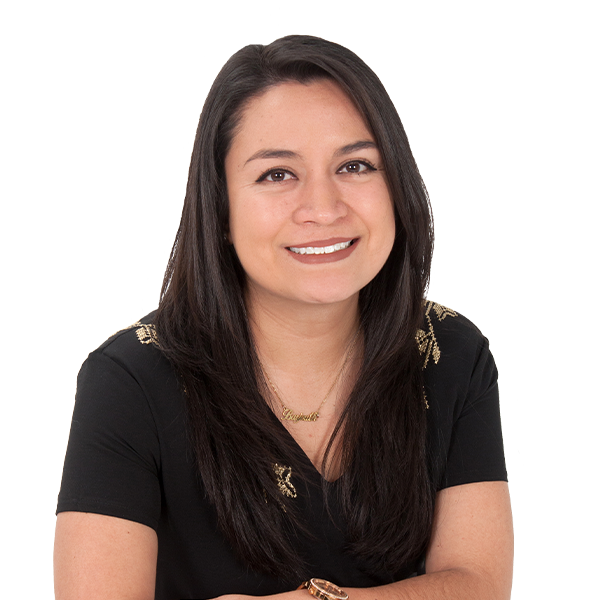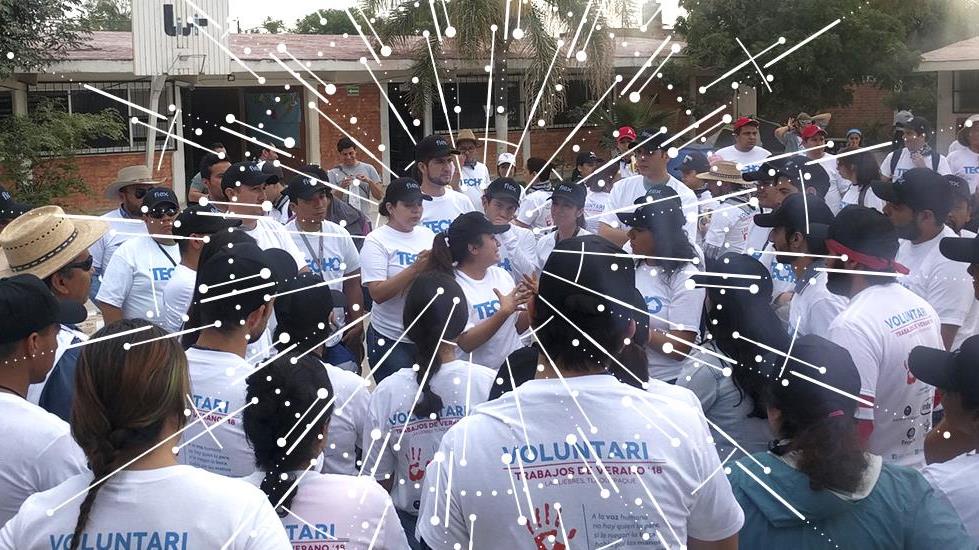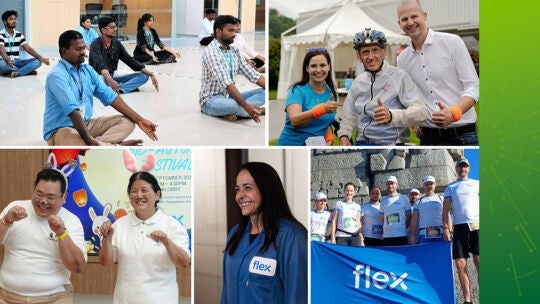
Our sustainability journey over the years has evolved in lockstep with rising accountability by businesses to the communities they operate in. Today, we take you to Guadalajara, the birthplace of Flex’s sustainability program, and chat with program leader Barjouth Aguilar. Barjouth has been part of our sustainability journey from almost the very beginning when she joined Flex in 2011. We caught up with her for a look back to understand how far our sustainability efforts have come, as well as for a look-forward to our next major milestones.

Quick facts about Barjouth Aguilar
- Head of Global Sustainability Program and Foundation Officer
- Based in Guadalajara, Mexico
- Joined Flex in 2011
Briefly take us through your early years at Flex and how this period coincides with our first steps towards a robust sustainability program.
I joined Flex in 2011 as an intern. Around this time, we started gathering data to report on sustainability, and the work was highly manual. My first big task was to work with cross-functional teams to identify and measure relevant site metrics like electricity, fossil fuel and water consumption, and waste management and aggregate this data into spreadsheets. Since then, we’ve put tools, procedures, and systems in place, and I’m happy to say that just about all of the data collection and related activities are automated today. After my internship turned into a full-time role, I was part of the team that oversaw the production of our first-ever sustainability report align to Global Reporting Initiative (GRI) published in 2013.
What was that process like?
It was quite exciting. The fact that we had no precedent to work with was an opportunity. My boss and I flew to Amsterdam to learn the GRI, the standard international framework used by large corporations to report economic, environmental, and social impact. We then identified our sustainability metrics and established the reporting guidelines, structure, and process. In a nutshell, this is how our sustainability reporting was born, which is coupled with a commitment to transparent reporting.
What achievements helped us build the foundation of our sustainability program today?

In 2015, we went from publishing our sustainability report every two years to an annual schedule. About two years ago, we received third-party verification by DNV GL for our environmental and community data. This is significant in that a trusted authority validated the data we were sharing.
We have earned a lot of recognition, from customers, the investor community, and industry organizations over the years as well, and these honors are incredibly rewarding. Perhaps, the most gratifying thing is that our stakeholders care about sustainability. They are increasingly showing a strong interest in our performance beyond financial measures. This is so important as it’s critical to account for all the ways our operations impact our planet and people.
How does our reporting balance the needs of our various stakeholders?
Investors and customers tend to have the highest requirements so we prioritize these. If we answer their needs, we’ll most likely be able to address the needs of other stakeholders.
How are we approaching our next sustainability targets?
In working toward a new set of sustainability goals for 2030 and beyond, our targets will closely align with the company’s refreshed strategy and help tackle broader societal and environmental issues. Supply chain resiliency and climate change along, with governance and transparency, will remain focal areas for us. We are also studying global sustainability trends to help architect the best strategy to leave a positive environmental, social, and economic impact on the communities where we live and work and better assist our customers reach their sustainability aspirations.
What are the complexities related to setting sustainability targets for a global organization like Flex?
We partner with thousands of suppliers throughout the value chain and manufacture different products for customers in healthcare, automotive, industrial, cloud, and communications, to name a few. This presents a variety of disclosure requirements to anticipate and address through our sustainability approach.
Additionally, our global presence calls for an examination of unique issues relevant to each country where we operate. We conduct a global analysis against industry recognized guidelines like the UN Sustainable Development Goals, the GRI, and Sustainability Accounting Standards Board (SASB) to make sure we are aligned with global trends, set a strong sustainability agenda, and work toward common goals for a better future.
What is the north star of our sustainability team?
Our company’s vision is to be the most trusted global technology, supply chain, and manufacturing solutions partner. Sustainability is an integral part to making this vision a reality, especially as stakeholder interest continues to grow and the world is calling on companies to do good in the course of running their business.




